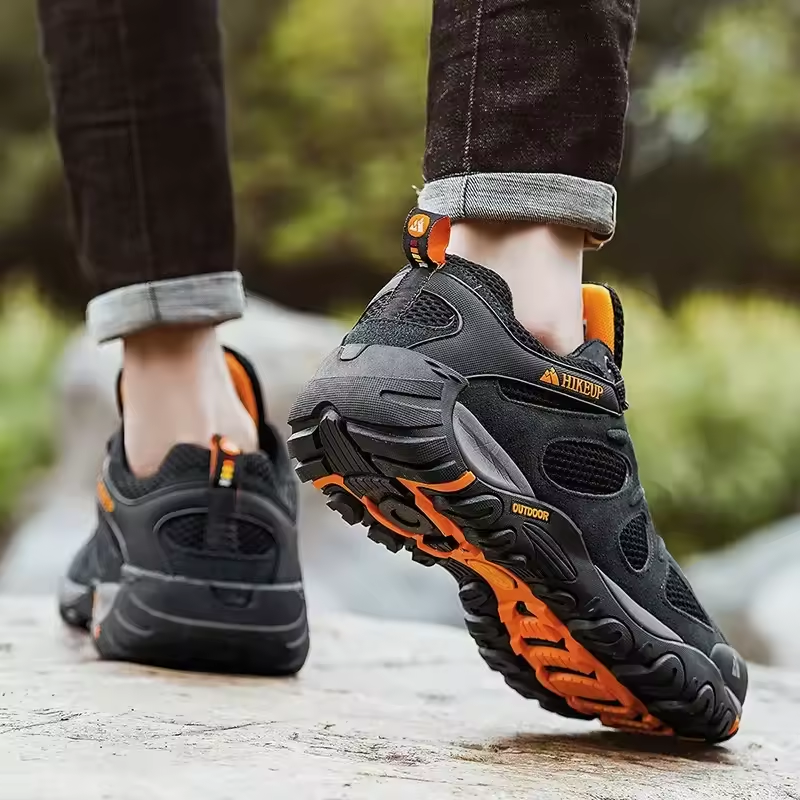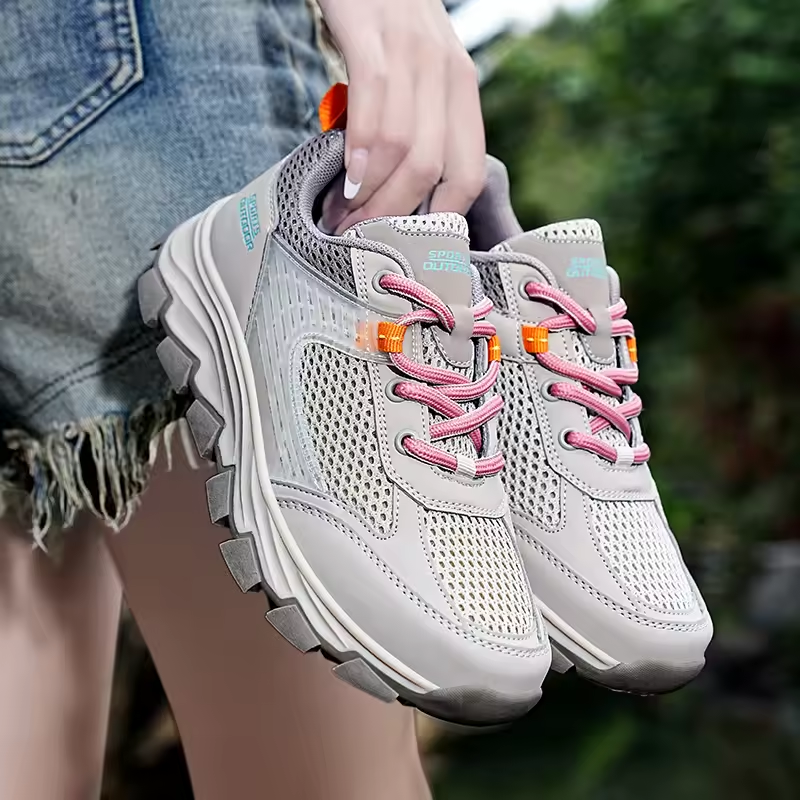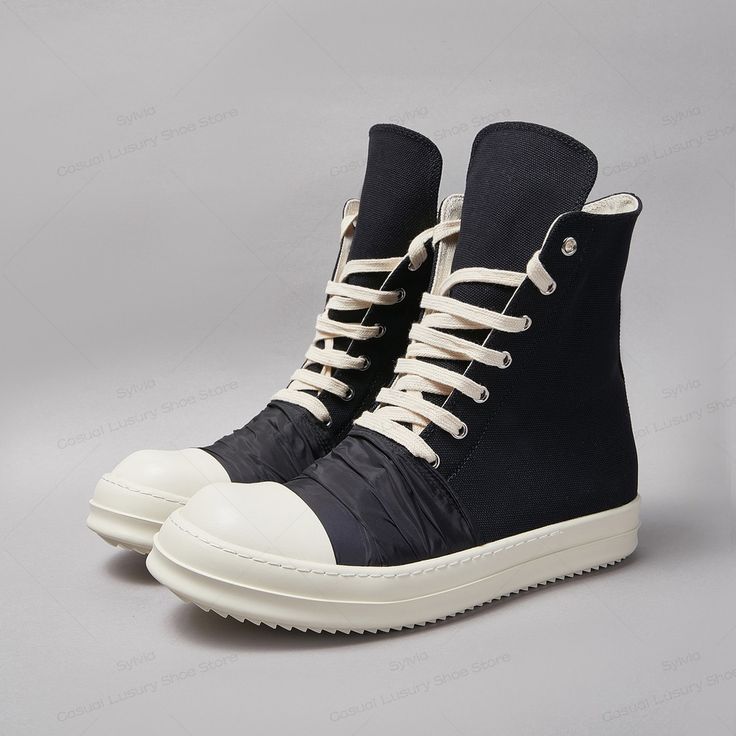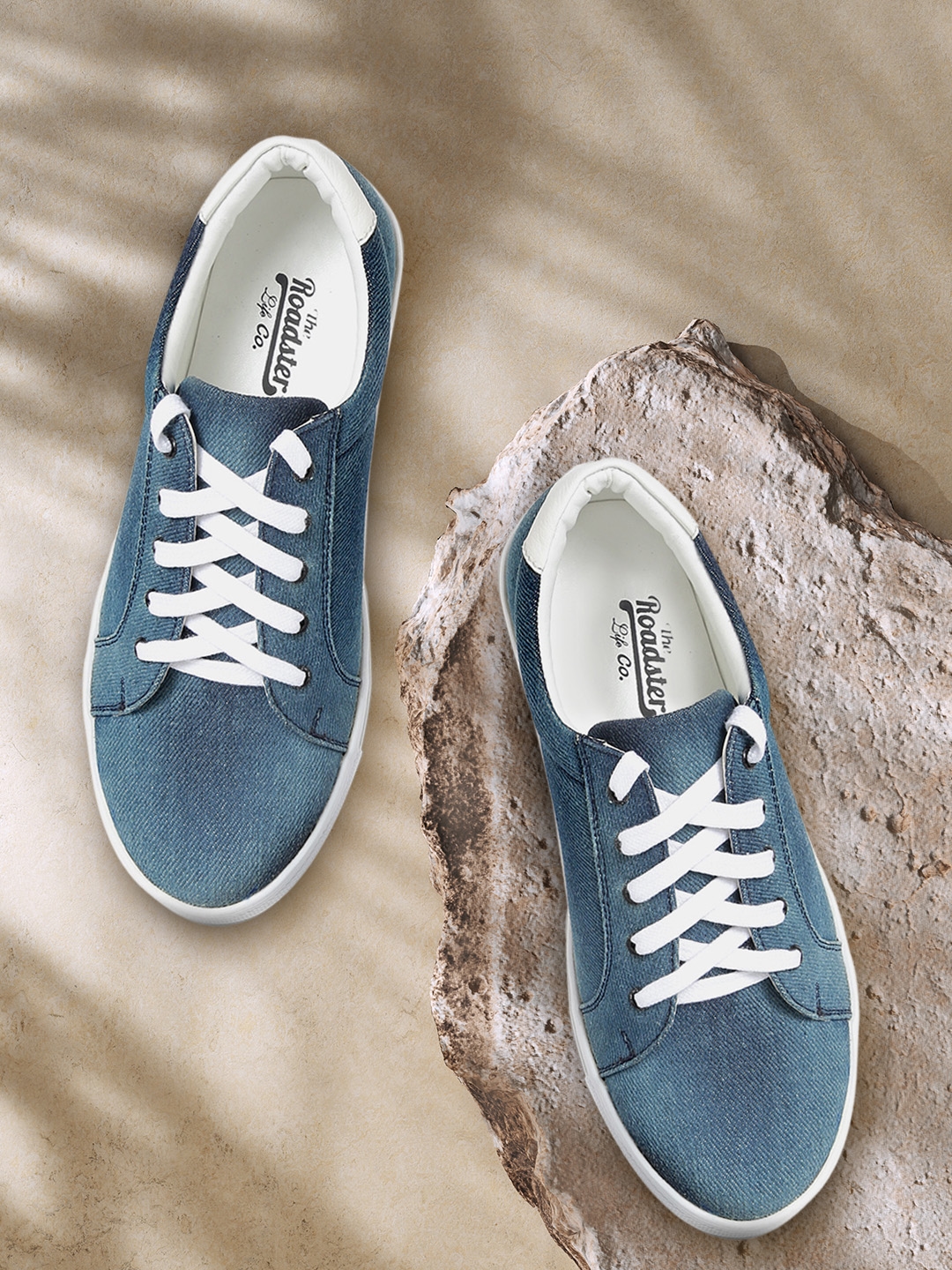Choosing the Right Climbing Shoes
Choosing the right climbing shoes is vital for your climbing experience. The shoe must fit well, offer the right support for your climbing style, and be durable enough to withstand the demands of the sport. With so many options on the market, making the right choice can seem daunting. However, understanding key factors and how to break in climbing shoes and achieve the perfect fit can make all the difference.

Factors to Consider When Buying Climbing Shoes
When searching for climbing shoes, several factors come into play. First, think about the type of climbing you’ll do most often. Are you bouldering, sport climbing, or engaging in multi-pitch trad climbs? Different styles require different shoe profiles and grips. Next, consider the material; leather stretches while synthetic fabrics tend to maintain their shape. Rubber type and thickness affect grip and sensitivity on the rock. Finally, closure systems—lace-up, Velcro, or slip-on—affect how snugly the shoe fits and how easily you can put it on or take it off.
Getting the Perfect Fit
The fit of your climbing shoes is crucial for effectiveness and comfort. Aim for a snug fit without pain. Remember that climbing shoes will stretch slightly as they break in, especially leather ones. Toes should be flat or slightly curved but not painfully bunched up. There should be no dead space around the heel or the rest of the foot. Trying on multiple sizes and brands will help you find the shoes that contour to your feet just right. Paying attention to these details will ensure your climbing shoes serve you well as you begin the break-in process.
Step 1: Wearing Your Climbing Shoes at Home
After choosing the right climbing shoes, it’s time to start the break-in process. Breaking in your climbing shoes is essential for comfort and performance. It can help prevent blisters and discomfort during longer climbs. The key is to do it gradually.
The Importance of Gradual Break-In
A slow and steady approach to breaking in climbing shoes is crucial. It allows the material to stretch and mold to your feet naturally. If you rush this process, you might damage the shoes or hurt your feet. Your goal is a custom fit that feels like a second skin.
Tips for Indoor Use
To break in your climbing shoes, begin by wearing them at home. Here are some simple tips:
- Start by wearing your shoes for short periods, such as 20 to 30 minutes.
- Gradually increase the time you wear them each day.
- Walk around on different surfaces to flex the shoes.
- Perform foot stretches to help the shoes conform to your feet.
- Avoid getting them wet, as water can affect the material.
Remember, while you wear your climbing shoes at home, it’s important to listen to your feet. If you feel pain, take off the shoes and give your feet a rest. By following these tips, your climbing shoes will soon be ready for the next step—stretching the shoes for a perfect fit.
Step 2: Stretching the Shoes
Once your climbing shoes are comfortably worn in at home, stretching them gently can further improve the fit.
Methods to Stretch Climbing Shoes
To stretch your climbing shoes, consider these methods:
- Wear thick socks to gently expand the shoes while walking around.
- Use a shoe stretcher overnight to widen specific areas gradually.
- Fill plastic bags with water, place them in your shoes, and freeze them. The water expands when frozen, stretching the shoes.
Engage in these methods incrementally to avoid overstretching your footwear. Remember that patience is key to maintaining the integrity of the shoes while achieving a personalized fit.
Cautions When Stretching Shoes
Exercise caution when stretching your climbing shoes:
- Avoid direct heat or hairdryers as they can damage shoe materials.
- Don’t use forceful methods that may weaken the shoe structure.
- Pay attention to pain or discomfort; stop stretching if it occurs.
Following these steps and cautions will help ensure your climbing shoes fit perfectly while preserving their quality for many climbs to come.
Step 3: Climbing Indoors
Benefits of Indoor Climbing Walls for Breaking In Shoes
Once your climbing shoes have had an indoor stretch, it’s time to escalate the break-in process with indoor climbing walls. Indoor walls offer a controlled environment, perfect for testing out the flexibility and fit of your newly adjusted climbing footwear. Here are key benefits:
- Controlled Conditions: Indoor climbing provides consistent temperatures and holds. This predictability aids the break-in process.
- Varied Surfaces: You can expose your shoes to different grips and walls. This diversity helps the shoes mold to your feet.
- Gradual Increase in Intensity: Start with easier climbs and slowly take on more challenging routes. This progression benefits the shoes and your confidence.
By taking advantage of these indoor benefits, you ensure a smoother transition to outdoor climbs and reduce the potential for discomfort.
Techniques for Effective Break-In While Climbing
When climbing indoors, apply these techniques to make the break-in period effective:
- Warm-Up Properly: Start with simple stretches to get your feet ready.
- Focus on Footwork: Use deliberate and precise movements. This practice helps your shoes adapt to climbing stresses.
- Short Sessions: Initially, keep climbing periods brief to avoid over-stressing your feet and shoes.
- Cool Down: After climbing, perform foot exercises to maintain flexibility and comfort.
With patience and the right techniques, your climbing shoes will conform to your feet. This match sets the stage for optimum performance as you tackle outdoor challenges.
Step 4: Taking Them Outdoors
After honing their shape indoors, your climbing shoes are ready for the real test: outdoor climbing. This transition is a crucial part of the break-in process. Outdoor surfaces are more diverse and challenging. They’ll push your climbing shoes to conform to natural rock shapes and textures.
Transitioning to Outdoor Climbing
Ease your climbing shoes into the outdoors. Start with less aggressive routes. This allows your shoes to adjust to new pressures without overwhelming them. Keep sessions short. Look for climbs that test different parts of the shoe, like the toe and heel. These steps help create a versatile fit for varied terrains.
Remember that outdoor rocks can be rough on your shoes. Examine them for signs of stress after each climb. If they’re adjusting well, gradually face more complex routes. This will continue to shape your shoes to your climbing style.
Taking Care of Shoes Between Climbing Sessions
Caring for your shoes between climbs helps extend their life. Brush off dirt and debris after each use. Avoid leaving them in the sun or in a hot car, as heat can warp the materials. Store them in a cool, dry place. If they’re damp, let them air dry away from direct sunlight.
Be mindful of odor as well. Some climbers use foot powder or special shoe deodorizers to tackle this common issue. Just ensure any product used won’t degrade the shoe’s material.
Follow these tips, and your climbing shoes will stay in prime condition through many outdoor adventures. Next, we will explore understanding the break-in period for your climbing footwear.
Understanding the Break-In Period
Your new climbing shoes will not reach their peak comfort level overnight. It’s important to understand the break-in period.
Typical Duration Until Full Comfort
Climbing shoes typically require a few weeks to break in fully. This time allows the material to mold to the shape of your feet. Some climbers find full comfort after several climbing sessions, while others may need more time. Use your shoes consistently for faster results. Keep in mind, materials and shoe design can affect duration.
Expect leather shoes to stretch and conform quicker than synthetic ones. Also, aggressive shoes with a tighter fit might take longer to break in than neutral, flat-soled shoes.
Signs Your Climbing Shoes Are Well Broken-In
Knowing when your climbing shoes are properly broken in is key. Look for the following signs:
- Comfort: They should feel snug without causing pain.
- Flexibility: The shoes flex with your feet’s movements more easily.
- Fit: No slipping or movement inside the shoe when climbing.
If your shoes still cause discomfort or restrict your movement after breaking them in, they may not be the right fit. In this case, reassess the size and style that best suits your needs.
Breaking in climbing shoes is a gradual process that improves your climbing experience. With time, you’ll enjoy the full benefits of a custom-fit climbing shoe. Remember to apply the tips from each step of this guide for an efficient and safe break-in period.
Maintenance Tips for Climbing Shoes
Proper care extends the life of climbing shoes and maintains their performance. Following a regular maintenance routine is as important as the break-in process.
Cleaning and Storage
Keep climbing shoes clean to prevent wear and material breakdown. Here’s how:
- Brush off dirt and chalk after every climb.
- Wash them gently by hand with mild soap if needed.
- Air dry away from sunlight or heat sources.
Store shoes in a cool, dry place. Avoid tight spaces where shoes can get deformed. Do not leave them in a car or direct sunlight. Such conditions can damage the shoes over time.
When to Resole Your Climbing Shoes
Climbing shoes need resoling when you notice:
- Thinning rubber on soles.
- Smooth spots where there should be texture.
- Holes starting to form near the toe area.
Resole shoes early to preserve the shoe’s shape and integrity. Timely resoling helps avoid more costly repairs. Look for a reputable cobbler who specializes in climbing shoes for best results.
By caring for your climbing shoes with these steps, you ensure their longevity and help maintain your climbing performance. Remember, how to break in climbing shoes is just one part of overall shoe care.


